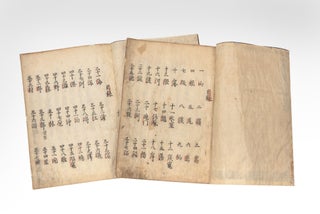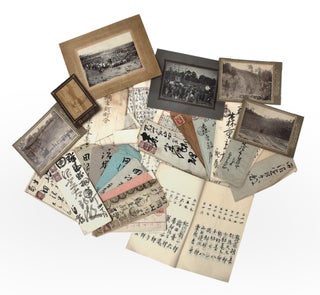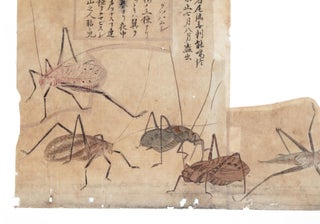![Item ID: 8893 Ŏjŏng Chusŏ paeksŏn or Eojeong Juseo baekseon 御定朱書百選 [Royally Authorized Selection of One Hundred Letters by Zhu (Xi)]. King of Korea CHŎNGJO 正祖.](https://jonathanahill.cdn.bibliopolis.com/pictures/8893.jpg?width=768&height=1000&fit=bounds&auto=webp&v=1679501354)
Master Zhu in Korea
Ŏjŏng Chusŏ paeksŏn or Eojeong Juseo baekseon 御定朱書百選 [Royally Authorized Selection of One Hundred Letters by Zhu (Xi)].
92.5; 95 folding leaves. Two vols. Small folio, orig. yellow-brown patterned wrappers (some soiling to wrappers), old stitching. Chŏnju (today’s Jeonju): 1795 or possibly later.
A selection of 100 letters written by Zhu Xi (1130-1200), the great synthesizer of the philosophical school known as Neo-Confucianism. Zhu Xi, who lived in southeastern coastal China far from the center of power, became extremely influential in East Asia for centuries following his death. His interpretation of Neo-Confucianism (a metaphysically argued philosophy of the self, the family, and the state) became official orthodoxy in late imperial China and Chosŏn Korea, promulgated largely through the civil service examination system. However, there were challenges to its primacy from intellectuals, especially from the 18th century onward.
“In the opinion of many historians, the Song’s preeminent philosopher, Zhu Xi outshined Confucius himself. He was the only person in Chinese history, apart from Confucius and Mencius, whom the official hagiography addressed as Master” (Kuhn, The Age of Confucian Rule, 103).
Given Zhu Xi’s standing in Korea, several collections of excerpts from his works were published beginning in the 16th century. On account of its authorship, Royally Authorized Selection of One Hundred Letters by Zhu [Xi] became one of the most widely circulated such collections for the last century of the Chosŏn period. According to the court chronicle, the culturally ambitious King Chŏngjo (1752-1800) himself made the selection on the basis of Zhu Xi’s collected works, a voluminous oeuvre that numbered 2354 pieces of writing, in one scholar’s recent count. Text-critical notes (e.g., on place names, personal names, official titles, and expressions that might be unfamiliar to Korean readers) were then added by four high civil officials, which were printed in the upper margin of the text.
The book was finished on the 25th day of the 12th month of the 18th year of Chŏngjo’s reign (Qianlong 59), which corresponds to 15 January 1795. While most of the 18th year corresponds to 1794, it is incorrect to date the book to that year. The book was first printed in Seoul with metal movable type — the so-called chŏng’yu cha 丁酉字 set of type cast in 1777 (the chŏng’yu year), when Chŏngjo ascended the throne. Further editions were subsequently published at several provincial offices using woodblocks, intended for wide dissemination among the educated elite.
Our copy belongs to one of these provincial woodblock editions. The title-page says ŭlmyo wanyŏng kan’in 乙卯完營刊印, meaning that it was printed in 1795 (the ŭlmyo year) in the provincial government offices at Chŏnju (Jeonju), in what is now southern South Korea. However, it is possible that the actual copy was struck later than that date, as the blocks remained on the site. They were moved to the local official Confucian school in 1899, where they remain today.
Fine set of a very rare book. Minor staining and soiling at beginning and end of each volume.
❧ WorldCat accession number 874756267.
References
Kuhn, Dieter. The Age of Confucian Rule: The Song Transformation of China. Cambridge: Mass.: Harvard University Press, 2011.
Price: $7,500.00
Item ID: 8893




